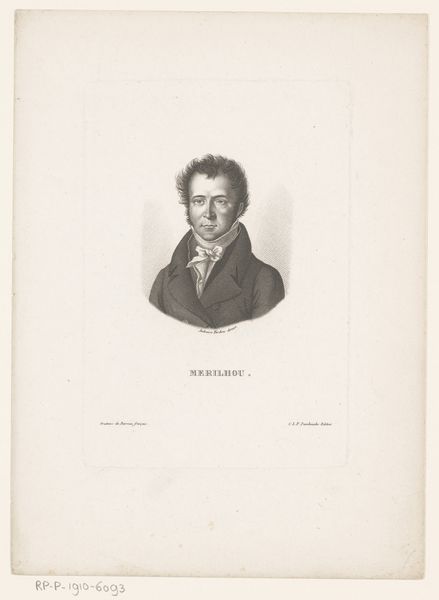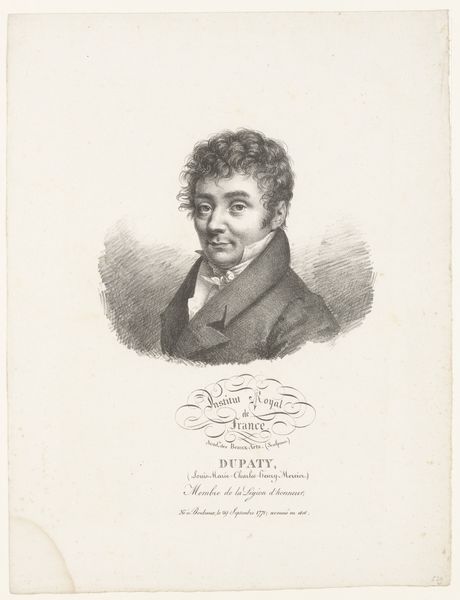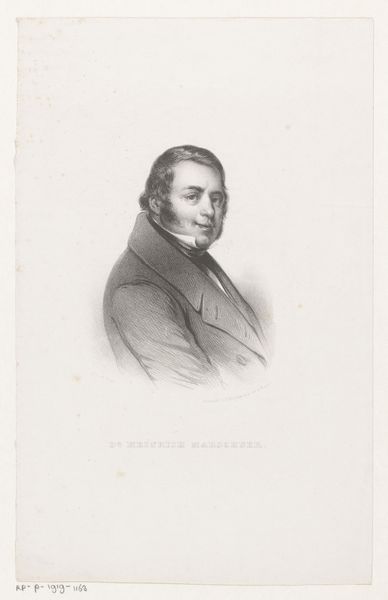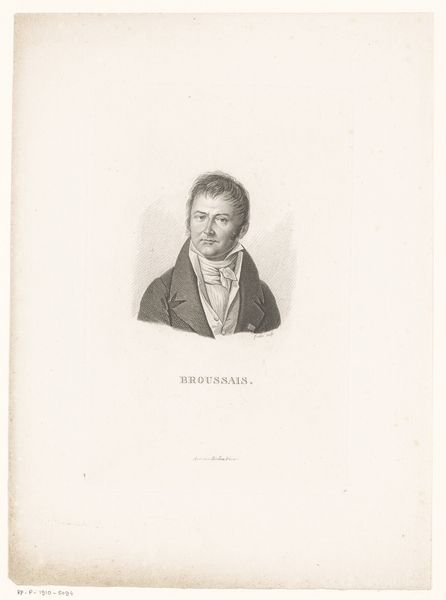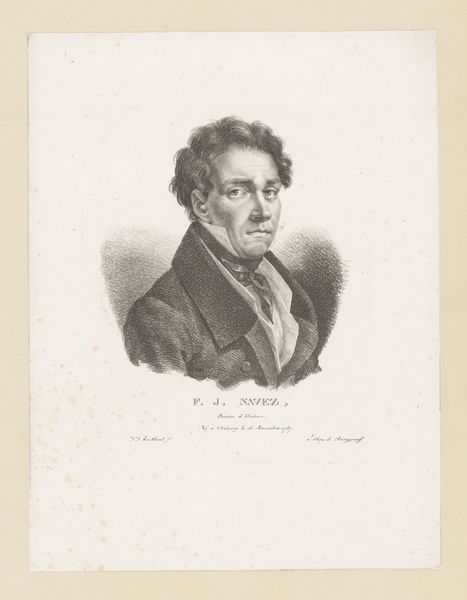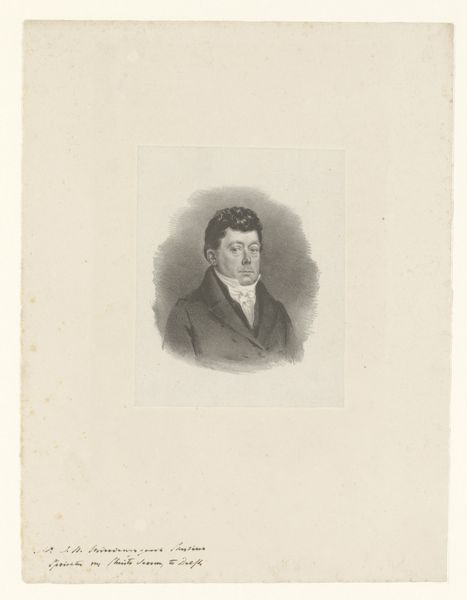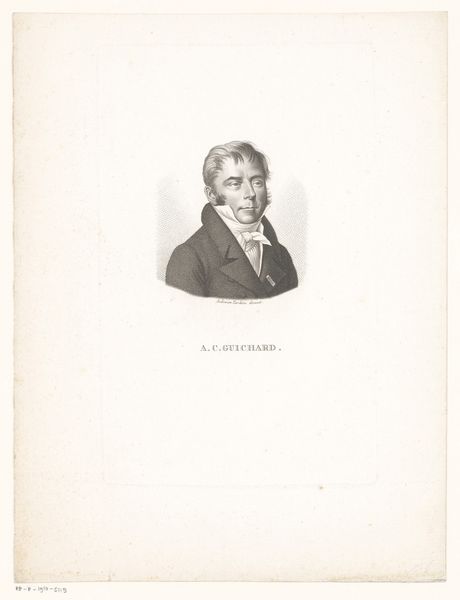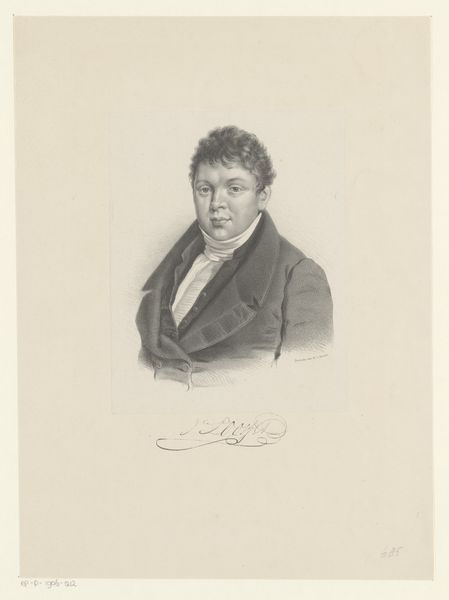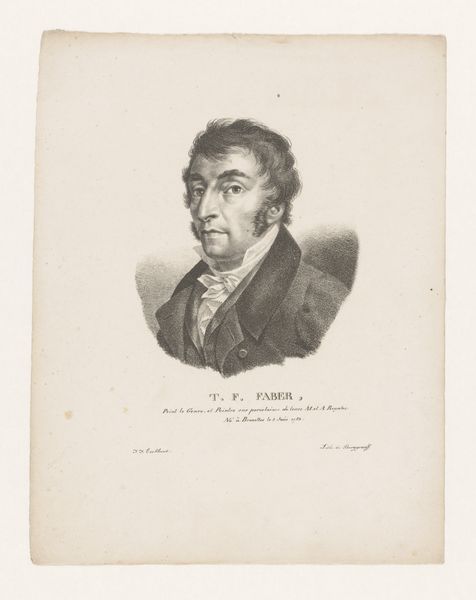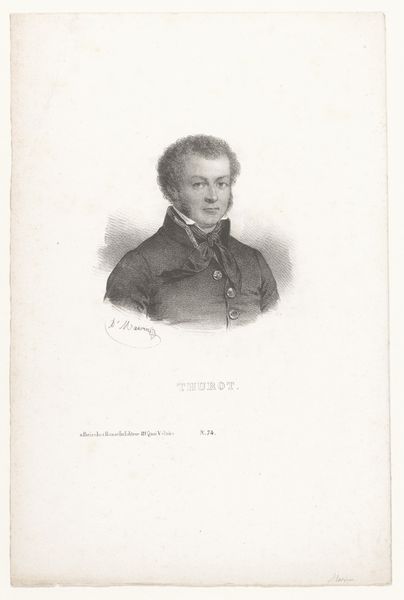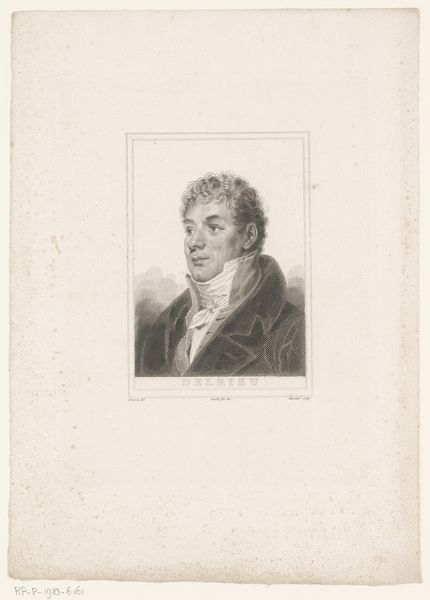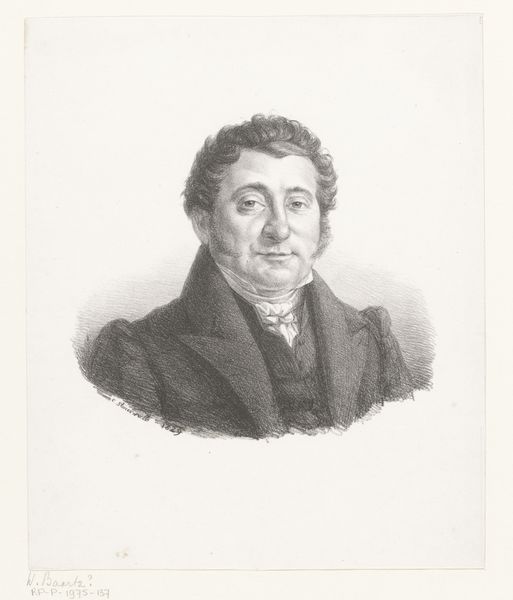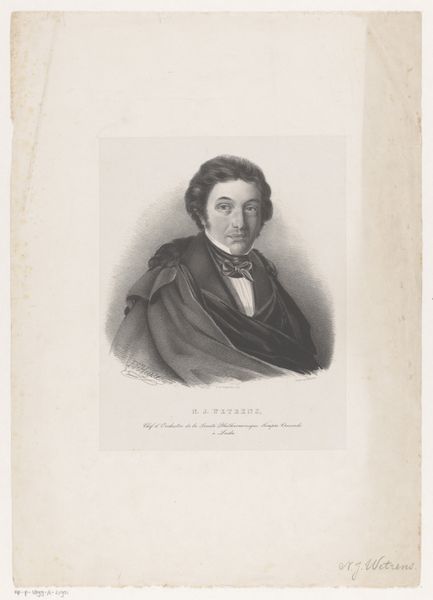
drawing, print, pencil, graphite, engraving
#
portrait
#
pencil drawn
#
drawing
# print
#
pencil sketch
#
old engraving style
#
form
#
pencil drawing
#
pencil
#
line
#
graphite
#
pencil work
#
engraving
#
realism
Dimensions: height 242 mm, width 159 mm
Copyright: Rijks Museum: Open Domain
Editor: This is Ephraïm Conquy's "Portret van Beauvisage," dating from between 1819 and 1843. It appears to be a print, made from pencil and engraving. I find the subject's gaze direct, but his expression somewhat difficult to read. What strikes you most about this piece? Curator: It's crucial to examine how portraits like these participate in the construction of identity and social hierarchies. How does Beauvisage's clothing, his pose, function within the context of 19th-century Dutch society? Who was Beauvisage, and what did it mean to have one's portrait engraved and disseminated in this way? What power dynamics are at play when a relatively unknown artist creates a lasting image of someone else? Editor: That's a great point; I hadn't thought about the power dynamic involved. The clothing does seem carefully considered. Does the style suggest anything about his class or profession? Curator: Exactly! And consider how printmaking, as a medium, democratizes access to imagery but simultaneously reinforces existing structures by immortalizing specific individuals, usually men from the middle or upper classes. Is it possible to consider such artwork without alluding to such socio-economic tensions, perpetuating certain inequalities? How might viewing this portrait through a contemporary lens, informed by postcolonial theory or feminist perspectives, alter our interpretation? Editor: It's interesting to consider it as more than just an individual likeness. Does the somewhat stiff pose perhaps reflect constraints placed upon men in that period? Curator: Precisely. Examining pose, dress, and the very act of commissioning a portrait allows us to unpack the complex negotiations of identity within historical power structures. It asks us to reflect on how representation shapes reality. Editor: I hadn't fully considered how even seemingly straightforward portraiture is so deeply embedded in social context. Curator: It shows us that art always engages in ongoing dialogues around identity, power, and representation. By recognizing these factors, we gain a more critical understanding.
Comments
No comments
Be the first to comment and join the conversation on the ultimate creative platform.
